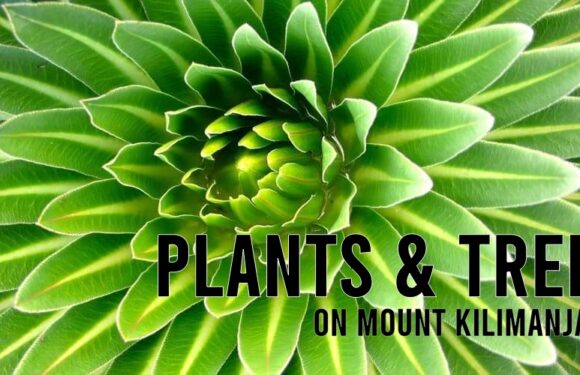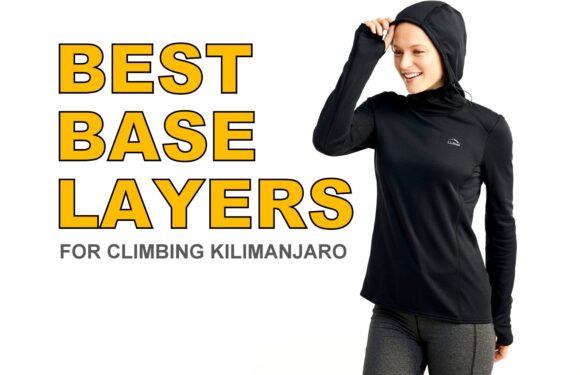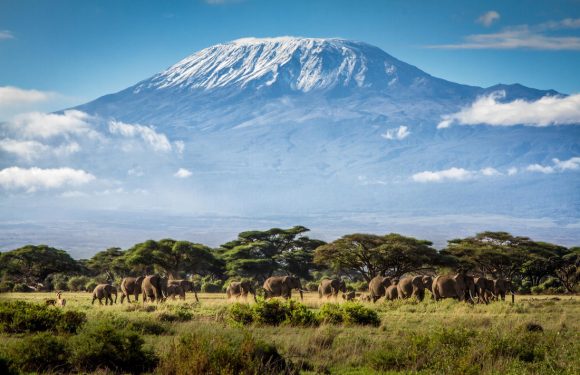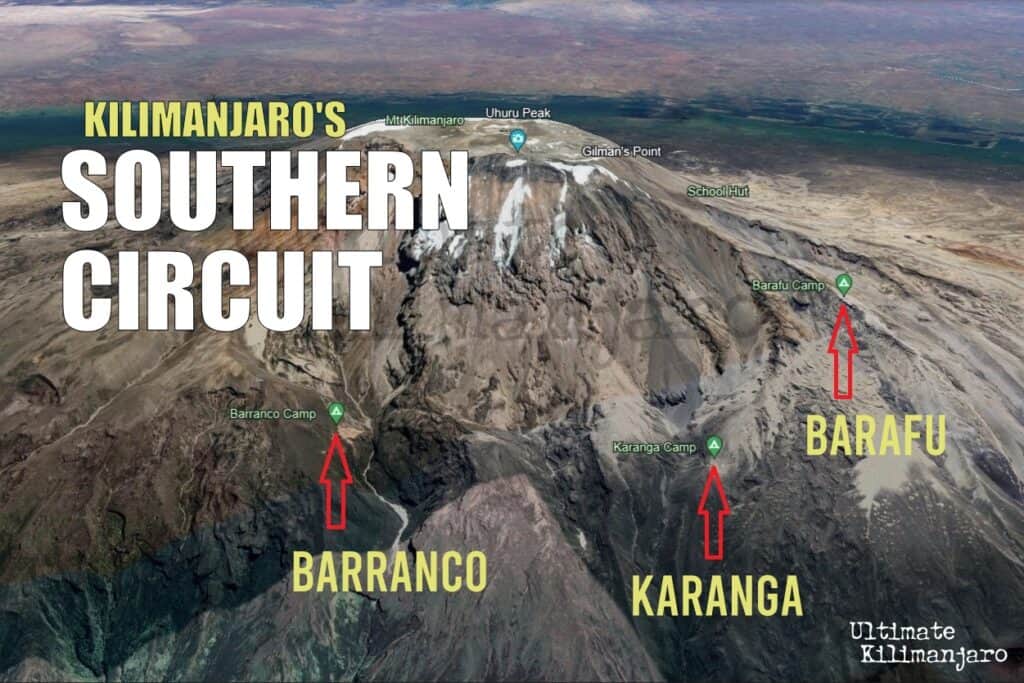
The Southern Circuit on Mount Kilimanjaro is a path that traverses the mountain’s underneath the Southern Ice Field. The route weaves through some of the mountain’s most beautiful camps: Barranco, Karanga, and Barafu Camp.
In completing the Southern Circuit, climbers experience the shifting landscapes of Kilimanjaro, from the shrubby lower slopes to the rocky, ice-capped summit.
Barranco Camp – 13,044 feet (3,976 meters)
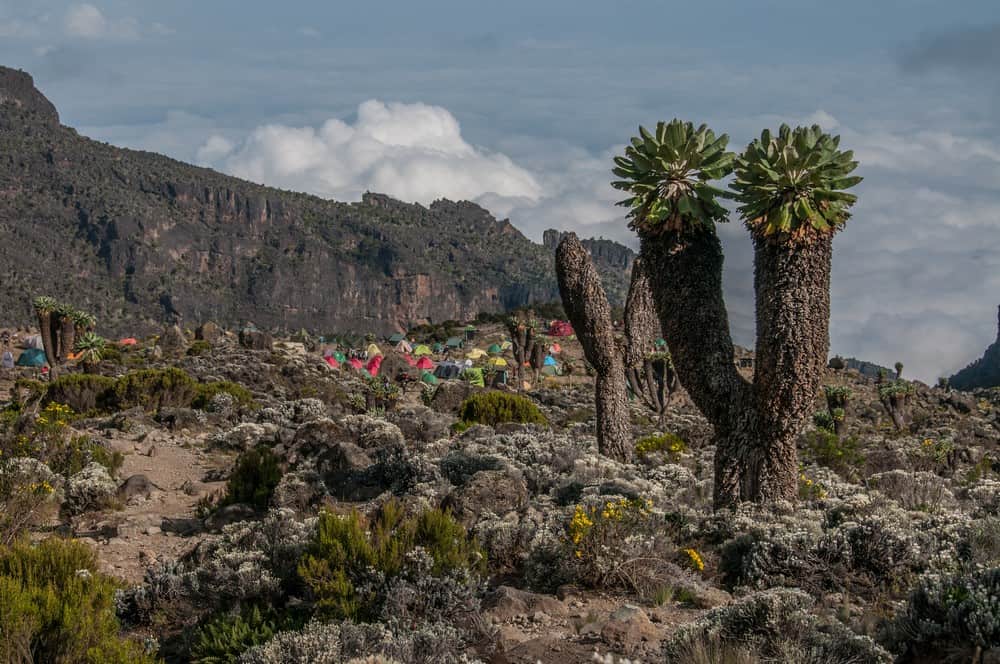
Barranco Camp is known for its stunning views. The word “Barranco” means “deep ravine” or “gorge” in Spanish, in reference to the camp’s position at the edge of a dramatic valley.
The descent into this camp takes trekkers through Kilimanjaro’s Barranco Valley. This unique landscape is lined with unusual plant life, including the Dendrosenecio kilimanjari, or giant groundsels, and the Lobelia deckenii. Above the campsite, a towering cliff face, known as the Barranco Wall, looms. Climbers scale this imposing rock feature after leaving the camp the next morning. The 843 foot (257 meter) tall cliff looks intimidating, but is actually an easy scramble to the top with minimal exposure.
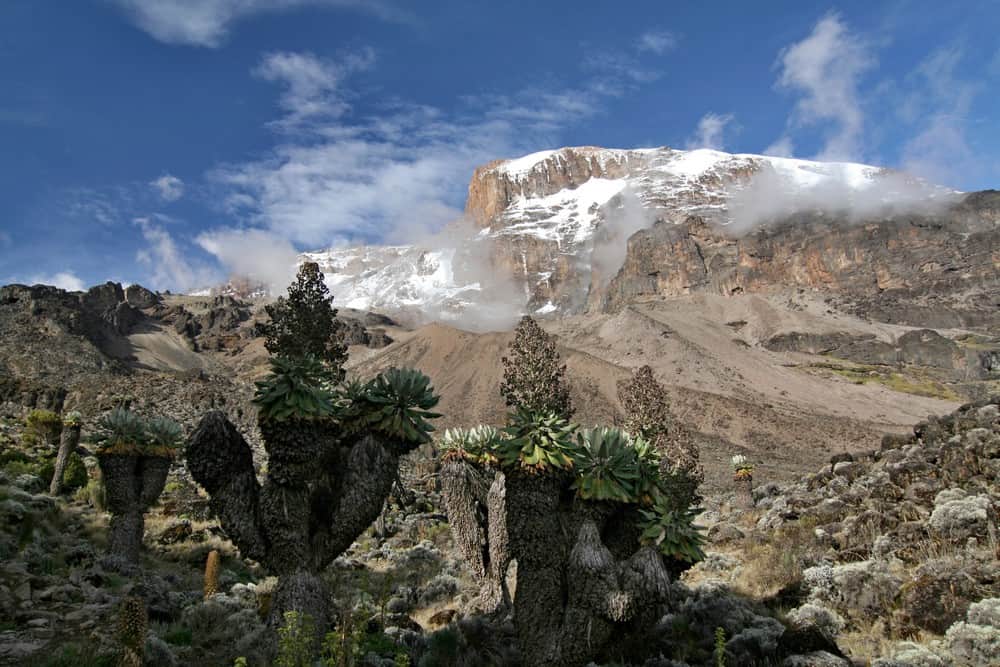
Located at the edge of two climate zones, Barranco camp lies in a transitional space between the heath/moorland zone and alpine desert. The weather here can be quite variable, with clear, sunny days swiftly changing to foggy conditions in the afternoons and evenings. Expect cold temperatures, especially at night.
Karanga Camp – 13,106 feet (3,995 meters)
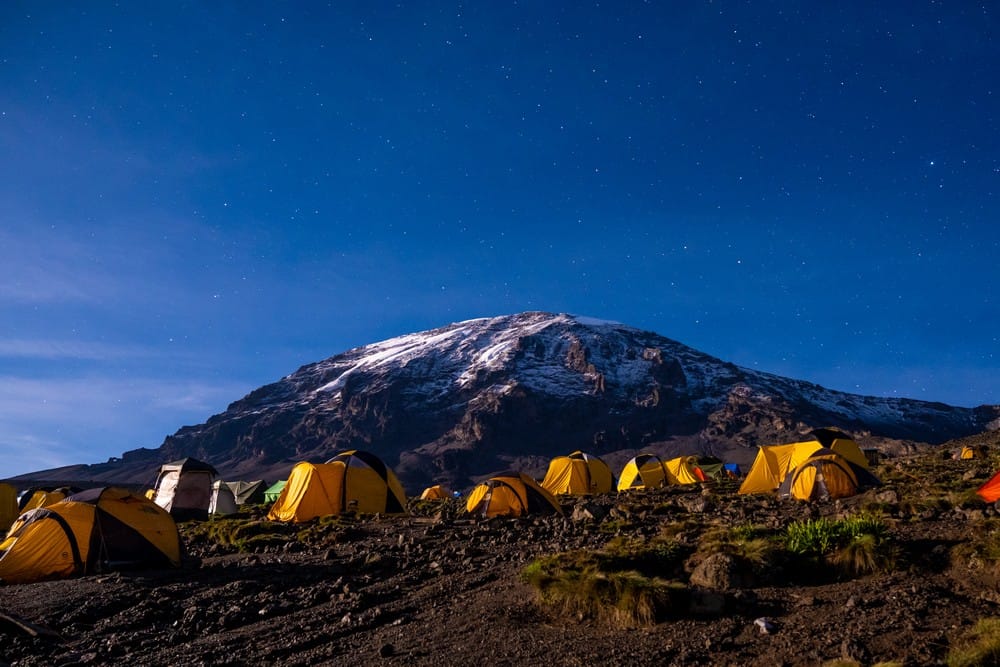
Karanga Camp is positioned at the boundary of Karanga Valley, south of Kibo’s volcanic cone. It offers climbers a moment of reprieve before the final ascent stages, though some of the shorter route variations skip this camp and proceed to Barafu. Spending a night here is recommended, as it allows climbers to adjust to the altitude and reduces the risk of altitude sickness.
The path to Karanga is about 5 kilometers and takes about 4-5 hours to complete. From Barranco Wall, it descends into a valley and involves navigating through a series of hills. From here, enjoy spectacular views of Kilimanjaro’s icy upper slopes and the clouds below. On clear nights, the lights of Moshi town can be seen far below.
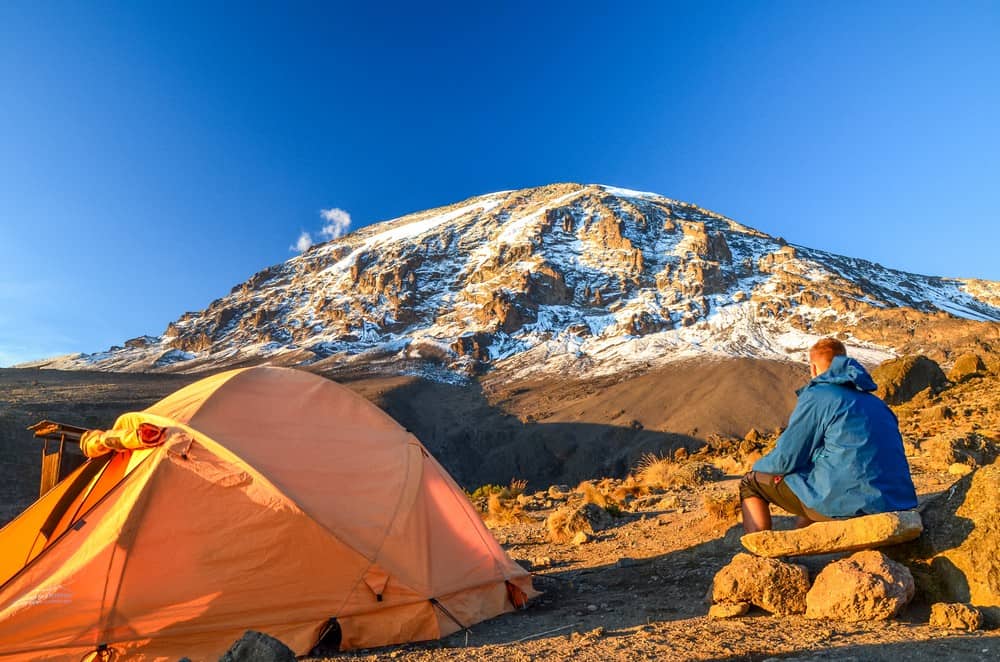
The elevation of Karanga Camp is almost the same as that of Barranco. It is located within the same transitional zone as Barranco, between the heath/moorland and alpine desert zone, and thus shares a similar climate – cool and variable. Likewise, the vegetation is sparse. Note that Karanga camp is built on a deceptive slope, so be careful as you make your way around camp.
The word “Karanga” means “peanut” in Swahili.
Barafu Camp – 15,331 feet (4,673 meters)
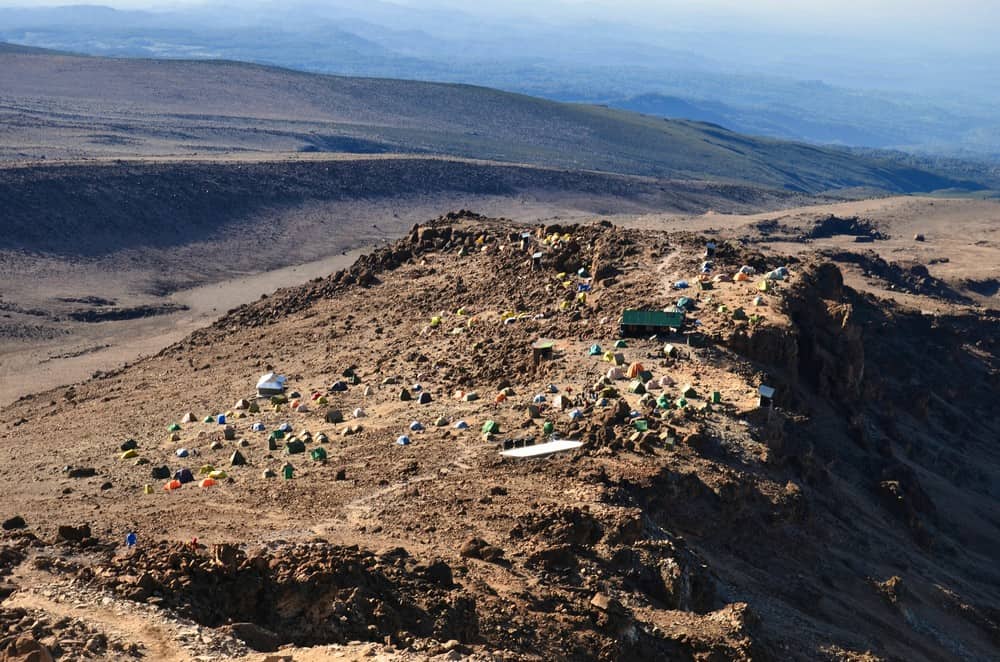
Barafu Camp is the final stop on the Southern Circuit before the summit push. It serves as base camp for climbers as they make their way to the top and back. “Barafu” means to “ice” in Swahili, describing the camp’s chilly conditions and the frosty nights.
The stretch from Karanga to Barafu is a gradual incline, allowing trekkers to slowly acclimatize to the camp’s high altitude. The hike typically takes about 4-5 hours to cover 4 kilometers.
Barafu Camp is perched high in Kilimanjaro’s alpine desert zone. The camp offers panoramic views of Mawenzi Peak and the vast plains below. But the site itself sits on a harsh, barren setting, characterized by bare rock and sparse vegetation. Exposed to the elements, Barafu experiences strong winds and frigid temperatures that can plummet below freezing. Try to stay sheltered in the mess tent or sleeping tent.
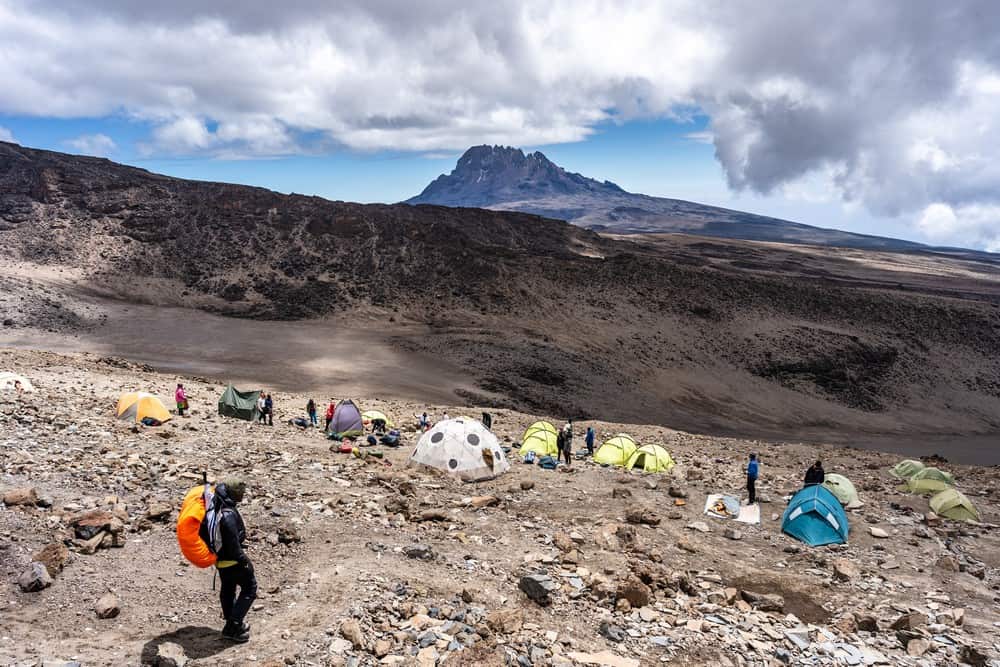
The atmosphere at Barafu is one of quiet anticipation, with climbers and guides making final preparations and discussing strategies for the summit bid. Dinner is served early, allowing for a few hours of sleep before the midnight departure towards the peak. This period is imperative for gathering strength and focus for the demanding hours ahead. Climbers are advised to rest as much as possible, though its elevation and thin air can make sleep elusive.
Which Routes Use the Southern Circuit?
The Lemosho, Shira, Machame, and Umbwe routes utilize the Southern Circuit, as they converge at a certain point on the mountain.
Here’s how each of these routes incorporates the Southern Circuit:
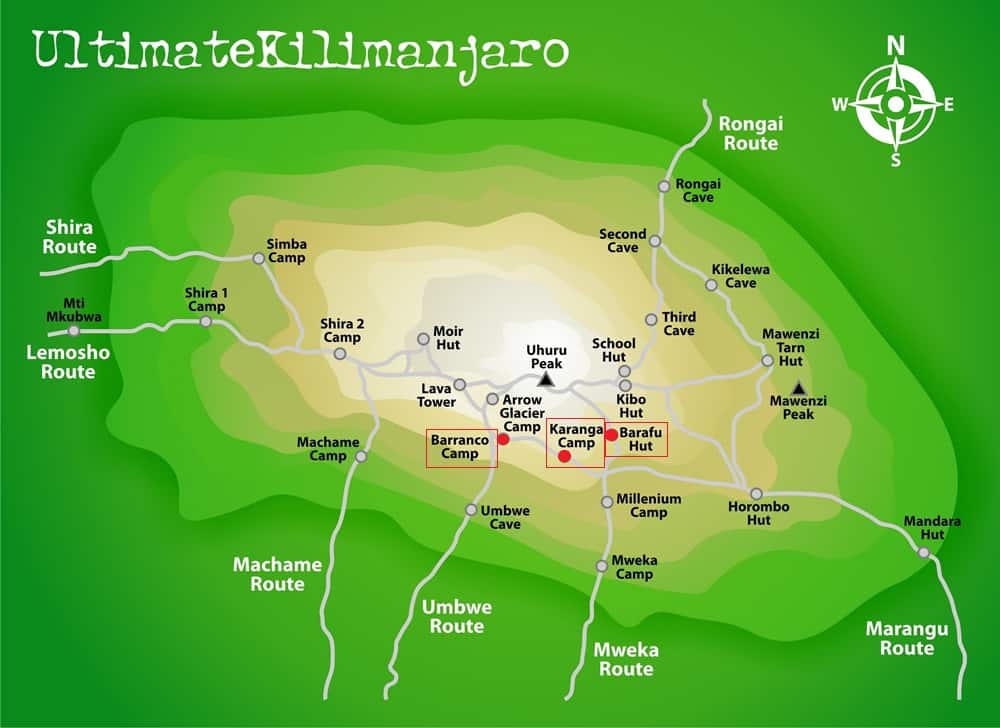
Lemosho and Shira Routes
The Lemosho and Shira routes begin on the western side of Mount Kilimanjaro. After several days of trekking, climbers merge onto the Southern Circuit as they approach Lava Tower and descend into the Barranco Valley. From there, they follow the circuit through Barranco Camp, Karanga Camp, and eventually to Barafu Camp, the final camp before the summit push.
Machame Route
The Machame route, also known as the “Whiskey Route,” starts on the southern base of the mountain. Climbers on this route enter the Southern Circuit directly after passing the Shira Plateau. They continue towards Lava Tower before descending to Barranco Camp, and then proceed through Karanga and Barafu Camp.
Umbwe Route
The Umbwe route is one of the shortest, steepest, and most direct routes to the summit of Kilimanjaro, It begins on the mountain’s southern side and quickly joins the Southern Circuit at Barranco Camp after an fast ascent through the rainforest and heath zones. From Barranco, climbers continue to Karanga and Barafu Camp, before their summit attempt.

Final Words
Climbers are advised to prepare adequately for the varied conditions, from the cool, damp nights in the heath/moorland zone to the biting cold of the alpine desert. Proper acclimatization, hydration, and pacing are key to enjoying the journey and reaching the summit safely.



















































